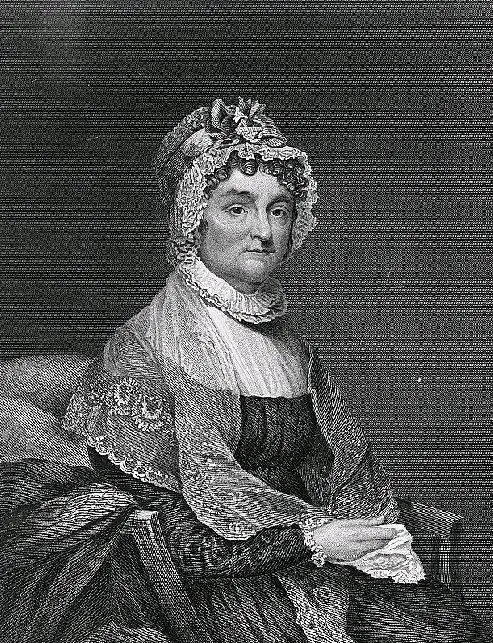Abigail Smith Adams (1744-1818)
|
Inheriting New England's strongest traditions, Abigail Smith was born in 1744 at Weymouth, Massachusetts. On her mother's side she was descended from the Quincys, a family of great prestige in the colony; her father and other forebearers were Congregational ministers, leaders in a society that held its clergy in high esteem. Like other women of the time, Abigail lacked formal education; but her curiosity spurred her keen intelligence, and she read avidly the books at hand. Reading created a bond between her and young John Adams, Harvard graduate launched on a career in law, and they were married in 1764. It was a marriage of the mind and of the heart, enduring for more than half a century, enriched by time. The young couple lived on John's small farm at Braintree or in Boston Long separations kept Abigail from her husband while he served the country they loved, as delegate to the Continental Congress, envoy abroad, elected officer under the Constitution. Her letters--pungent, witty, and vivid, spelled just as she spoke--detail her life in times of revolution. They tell the story of the woman who stayed at home to struggle with wartime shortages and inflation; to run the farm with a minimum of help; to teach four children when formal education was interrupted. Most of all, they tell of her loneliness without her "dearest Friend." The "one single expression," she said, "dwelt upon my mind and played about my Heart...." In 1784, she joined him at his diplomatic post in Paris, and observed with interest the manners of the French. After 1785, she filled the difficult role of wife of the first United States Minister to Great Britain, and did so with dignity and tact. They returned happily in 1788 to Massachusetts and the handsome house they had just acquired in Braintree, later called Quincy, home for the rest of their lives. As wife of the first Vice President, Abigail became a good friend to Mrs. Washington and a valued help in official entertaining, drawing on her experience of courts and society abroad. After 1791, however, poor health forced her to spend as much time as possible in Quincy. Illness or trouble found her resolute; as she once declared, she would "not forget the blessings which sweeten life." When John Adams was elected President, she continued a formal pattern of entertaining--even in the primitive conditions she found at the new capital in November 1800. The city was wilderness, the President's House far from completion. Her private complaints to her family provide blunt accounts of both, but for her three months in Washington she duly held her dinners and receptions. The Adamses retired to Quincy in 1801, and for 17 years enjoyed the companionship that public life had long denied them. Abigail died in 1818, and is buried beside her husband in United First Parish Church. She leaves her country a most remarkable record as patriot and First Lady, wife of one President and mother of another. |
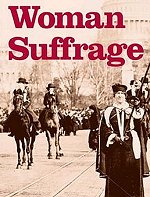 The Concise History of Woman Suffrage: Selections from History of Woman Suffrage, by Elizabeth Cady Stanton, Susan B. Anthony, Matilda Joslyn Gage, and the National American Woman Suffrage Association |
Women of the American Suffrage Movement
Womens Suffrage Timeline
American Civil War Women
Womens Civil War Reading Titles
American Civil War Recipes
Civil War Exhibits
Dora Lewis (center) of Philadelphia [with Clara Louise Rowe (left) and Abby Scott Baker (right)] on release from jail after days of hunger strike. August 1918.

The day after the police announce that future pickets would be given limit of 6 mos. in prison,
Alice Paul led picket line with banner reading "The time has come to conquer or submit for there is but one choice - we have made it."
She is followed by Mrs. Lawrence Lewis [Dora Lewis]. This group received 6 mos. in prison.
click to enlarge photo

Left to right: Adelaide Johnston, sculptor, Mrs. Lawrence [Dora] Lewis, Phila., Jane Addams. At time statue was placed in capitol.

 Jailed for Freedom by: Doris Stevens Dramatic documentation of women's struggle to win the vote is brought to light by a firsthand witness who reveals, among other facts, the imprisonment, vilification and brutality women experienced during their fight |
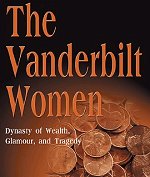 The Vanderbilt Women: Dynasty of Wealth, Glamour and Tragedy The fascinating lives of three generations of Vanderbilt women who dominated New York society from the middle of the eighteenth century through the twentieth. Of special interest are the discovery of unpublished letters |
 Century of Struggle The Womans Rights Movement Young suffragists who helped forge the last links in that chain were not born when it began. Old suffragists who forged the first links were dead when it ended. It is doubtful if any man, even among suffrage men, ever realized what the suffrage struggle came to mean to women |
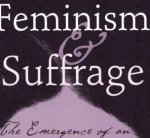 Feminism and Suffrage: The Emergence of an Independent Women's Movement in America, 1848-1869 In the two decades since Feminism and Suffrage was first published, the increased presence of women in politics and the gender gap in voting patterns have focused renewed attention on an issue generally perceived as nineteenth-century |
|||||||||||||||||||||||||||||||||||||||||||||||||||||||||||||||||||||||||||||||||||||||||||||||||||||||||||||||||||||||||||||||||||||||||||||||||||||||||||||||||||||||||||||||||||||||||||||||||||||||||||||||||||||||||||||||||||||||||||||||||||||||||||||||||||||||||||||||||||||||||||||||||||||||||||||||||||||||||||||||||||||||||||||||||||||||||||||||||||||||||||||||||||||||||||||||||||||||||||||||||||||||||||||||||||||||||||||||||||||||||||||||||||||||||||||||||||||||||||||||||||||||||||||||||||||||||||||||||||||||||||||||||||||||||||||||||||||||||||||||||||||||||||||||||||||||||||||||||||||||||||||||||||||||||||||||||||||||||||||||||||||||||||||||||||||||||||||||||||||||||||||||||||||||||||||||||||||||||||||||||||||||||||||||||||||||||||||||||||||||||||||||||||||||||||||||||||||||||||||||||||||||||||||||||||||||||||||||||||||||||||||||||||||||||||||||||||||||||||||||||||||||||||||||||||||||||||||||||||||||||||||||||||||||||||||||||||||||||||||||||||||||||||||||||||||||||||||||||||
 Woman Suffrage and the New Democracy The woman suffrage movement achieved its goal by forging a highly organized and centrally controlled interest group, the National American Woman Suffrage Association (NAWSA), one of the most effective single-issue pressure groups in the United States |
 From Equal Suffrage to Equal Rights: Alice Paul and the National Woman's Party, 1910-1928 The woman's movements and work in American history was dramatic. It dealt with the past, with pageants and politics; with organizations and with conflict from within |
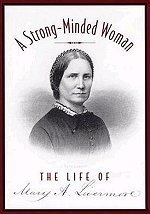 A Strong-minded Woman The Life of Mary Livermore A leading figure in the struggle for woman's rights as well as in the temperance movement, she was as widely recognized during her lifetime as Susan B. Anthony, and for a time the most popular and highly paid female orator in the country |
Kindle Available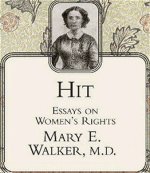 Hit: Essays on Women's Rights by Mary Edwards, M.D. Walker The only woman to receive the Congressional Medal of Honor for her service during the Civil War, Dr. Mary E. Walker (1832-1919) was a surgeon, a public lecturer, and an outspoken champion of women's rights. One of the first women in the country to be awarded a medical degree, she served as an assistant surgeon for the Fifty-second Ohio Infantry |
|||||||||||||||||||||||||||||||||||||||||||||||||||||||||||||||||||||||||||||||||||||||||||||||||||||||||||||||||||||||||||||||||||||||||||||||||||||||||||||||||||||||||||||||||||||||||||||||||||||||||||||||||||||||||||||||||||||||||||||||||||||||||||||||||||||||||||||||||||||||||||||||||||||||||||||||||||||||||||||||||||||||||||||||||||||||||||||||||||||||||||||||||||||||||||||||||||||||||||||||||||||||||||||||||||||||||||||||||||||||||||||||||||||||||||||||||||||||||||||||||||||||||||||||||||||||||||||||||||||||||||||||||||||||||||||||||||||||||||||||||||||||||||||||||||||||||||||||||||||||||||||||||||||||||||||||||||||||||||||||||||||||||||||||||||||||||||||||||||||||||||||||||||||||||||||||||||||||||||||||||||||||||||||||||||||||||||||||||||||||||||||||||||||||||||||||||||||||||||||||||||||||||||||||||||||||||||||||||||||||||||||||||||||||||||||||||||||||||||||||||||||||||||||||||||||||||||||||||||||||||||||||||||||||||||||||||||||||||||||||||||||||||||||||||||||||||||||||||||
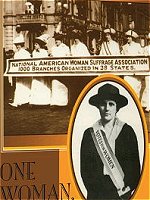 One Woman One Vote This program documents the struggle which culminated in the passing of the 19th Amendment in the U.S. Senate by one vote. Witness the 70-year struggle for women's suffrage. Discover why the crusaders faced entrenched opposition from men and women who feared the women's vote would ignite a social revolution. DVD |
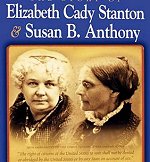 Not for Ourselves Alone: The Story of Elizabeth Cady Stanton & Susan B. Anthony Together they fought for women everywhere, and their strong willpower and sheer determination still ripples through contemporary society. Here lies the story of two of our century's most celebrated pioneers Elizabeth Cady Stanton and Susan B. Anthony. DVD |
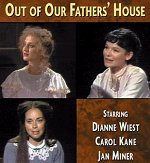 Out of Our Fathers House Broadway Theatre Archive This play presents the true stories of women who sought independence at any cost. The compelling text is taken entirely from the diaries, journals and letters of the characters portrayed. |
Sources:
U.S. Library of Congress

